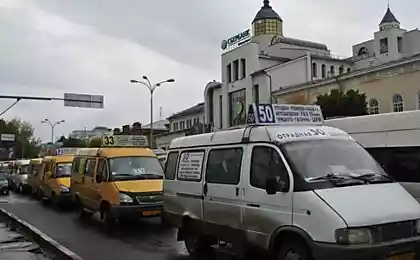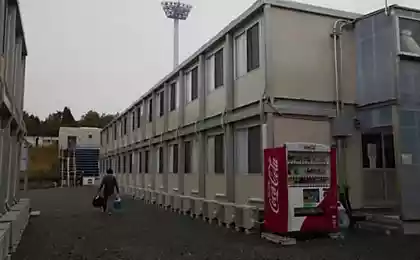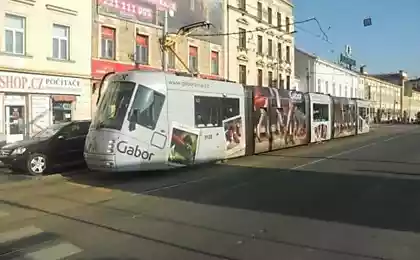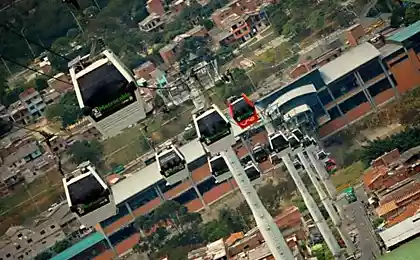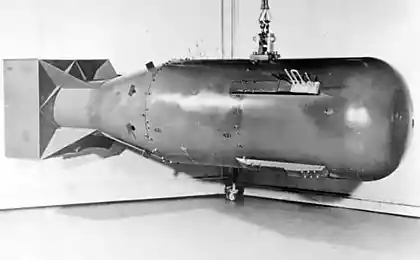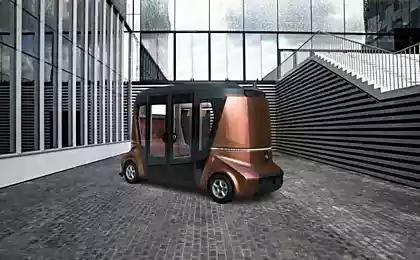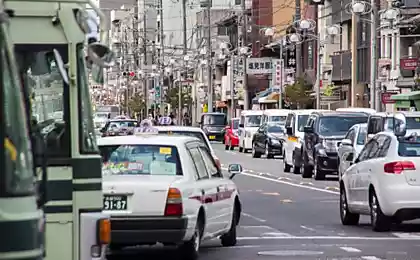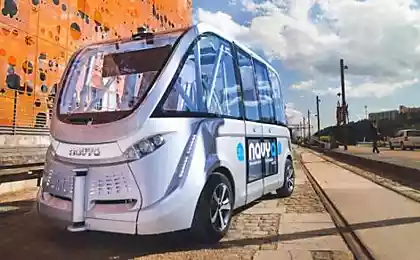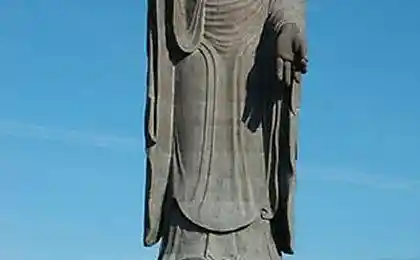3462
Japanese public transport system
In Japan, the public transport system is developed as anywhere in the world. The reason is the high population density and in the cities, where contain personal car is too expensive for the majority of citizens, and a large area of the country (for example, more than a third of the UK) and its length from north to south. But, first things first.
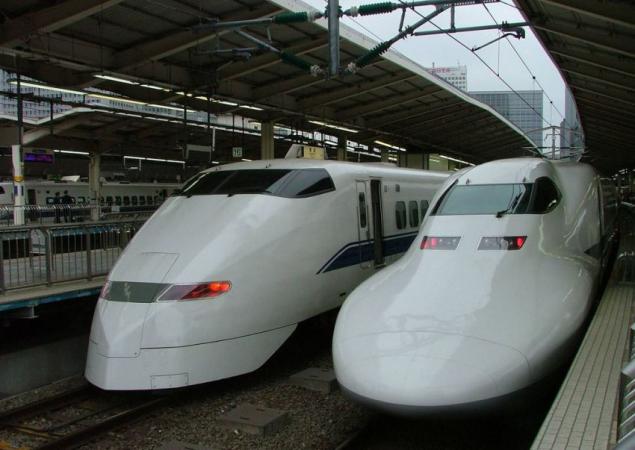
Let's start with the Tokyo subway.
In the photo the entrance to the station Suehirocho Tokyo subway. Would look like the entrance to any station other than the major hubs. Subway in Tokyo - not deep bookmarks, not subjectively deeper than 10-15 meters.
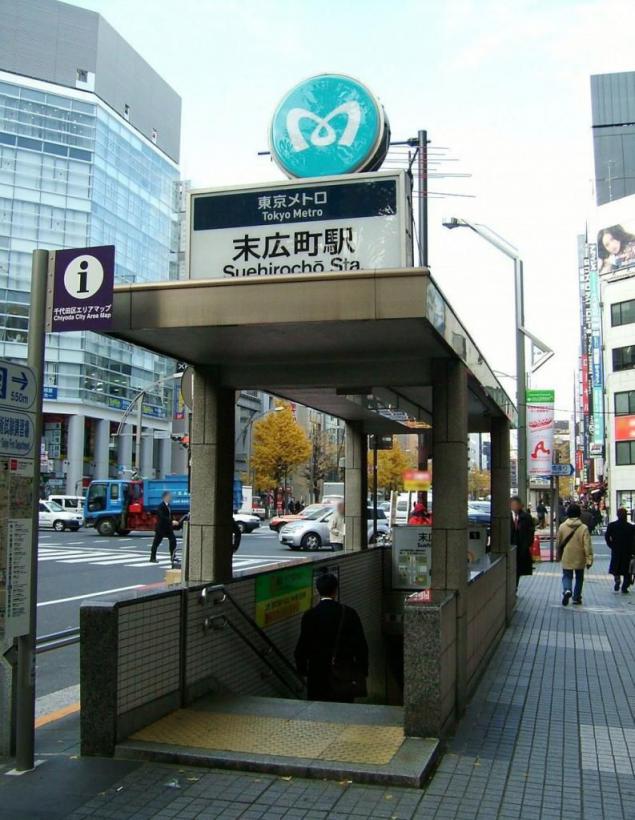
And here is the first difficulty faced by any tourist in Tokyo, and it is the same - the first manifestation of progress. The fact that all the most popular public transportation system in Japan - fully automated. There are no conductors and cashiers. Ticket purchase is made by myself in such a machine. You need to select the desired number on the screen, scatter coins and the machine prints the ticket.
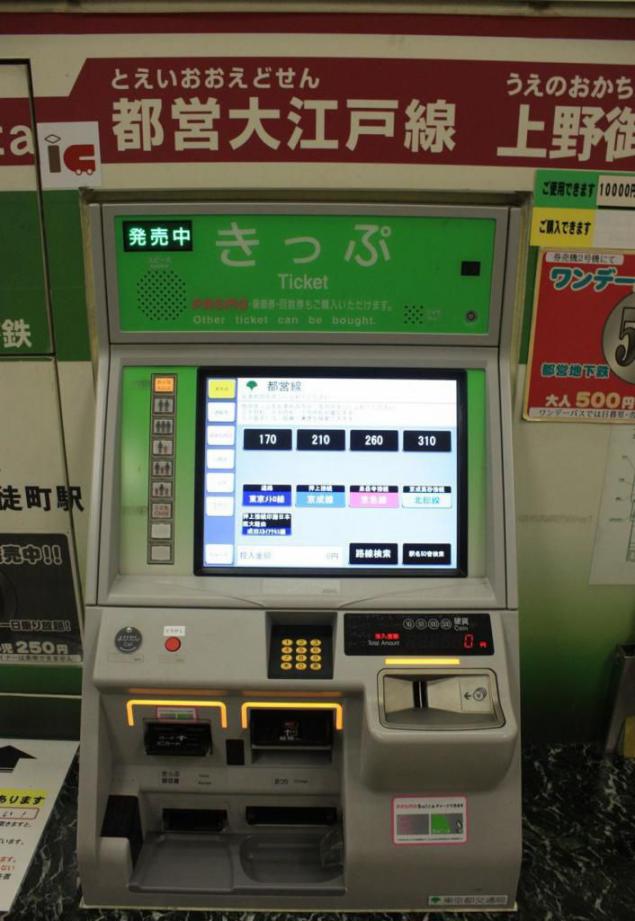
The challenge is also to what kind of ticket price to choose.
In this case, we have a map over your head, you only need to find a destination. Only here on small stations such card has no station names in English, and the fun begins puzzle :)
Prices on the map - in yen. Divide by 3 to find out the approximate cost in rubles. On this line the minimum ticket price - 170 yen, ie ~ 56 rubles.
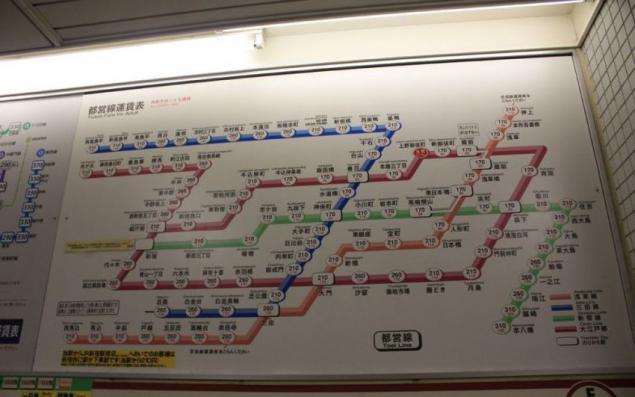
Purchased a ticket for 260 yen. Ticket paper,
To enter the platform is necessary to pass the turnstile by inserting the card into the reader (pictured it in light green box). When entering the ticket is marked as used, but without it from the destination station can not get out - have to buy a new one. Because the stations clean. When you exit the subway turnstile also eat the ticket and send it for recycling and reuse.
The Japanese tend to travel in a reusable contactless cards (blue card reader on the photo).
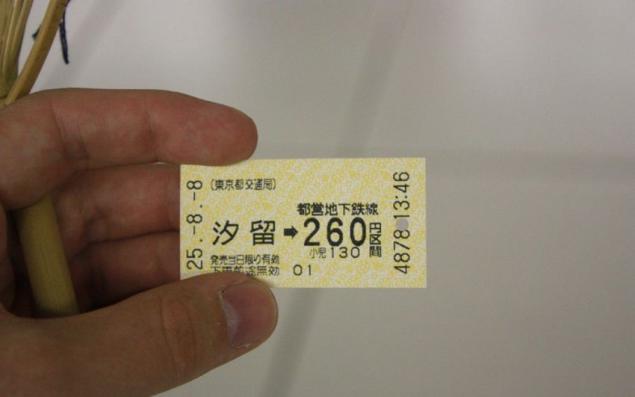
Turnstiles
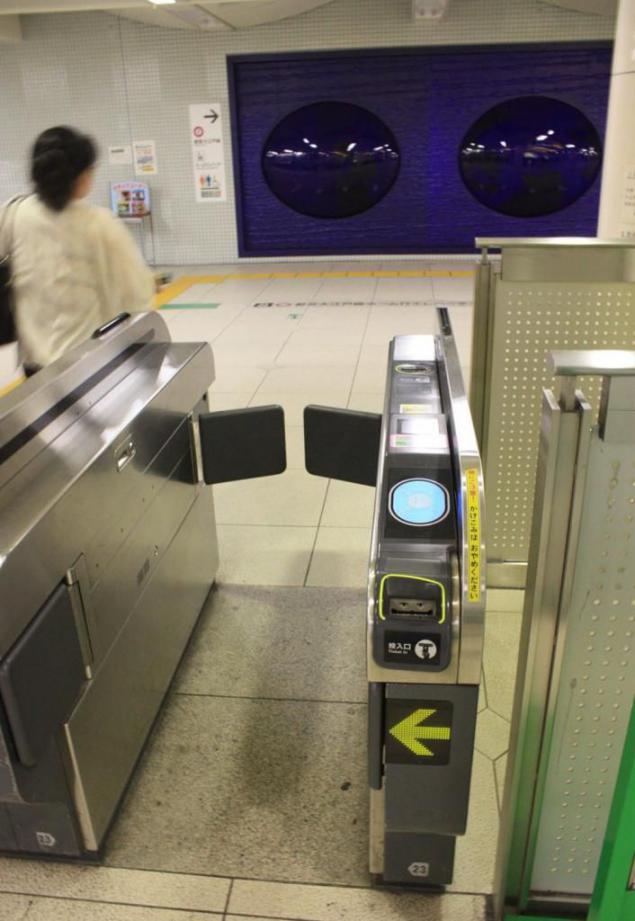
Turnstiles passed. Top you see the signs where to go. On them we'll talk more later, now I will note only one thing - many stations are huge, and local do not know their entirety, because absolutely everyone uses these pointers.
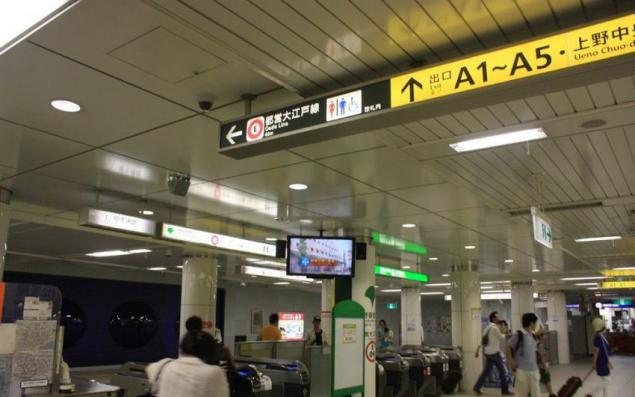
The signs have come to the correct platform, found our train with burgundy red stripe. Such automatic stop, so that people do not fall onto the tracks, only on some lines.
Trains in Japan, as we all know, they go right on schedule. Every 2-3 minutes. 90% of time on trains is spacious and has a seating area. During rush hour a lot of people, but not to the eyeballs.
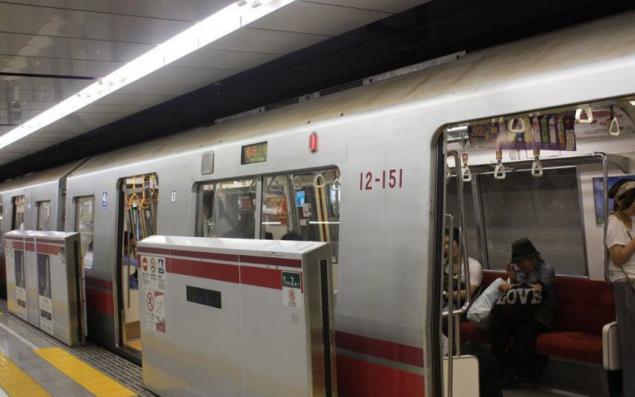
Absolutely all trains have this kind of board. However, this is not the peak of the Japanese progress, half of trains instead of the meager information board full line diagram, the current station, the following information, if possible data transfer to another, etc. All in English and Russian (and across the country)
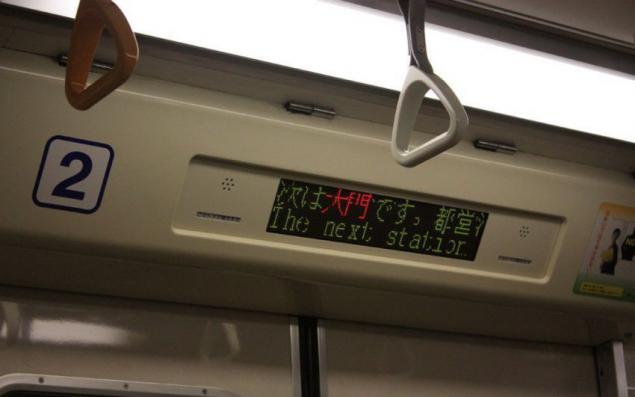
In all public transport in Japan is forbidden to talk on cell phones.
If this rule is violated tourist - the Japanese will understand and mind will not submit. However, if it makes a local, he is bound to be reprimanded. In my memory for 2 weeks stay in this country once the Japanese talking on the phone, and he did it very quietly and covered her mouth to God forbid not to disturb others.
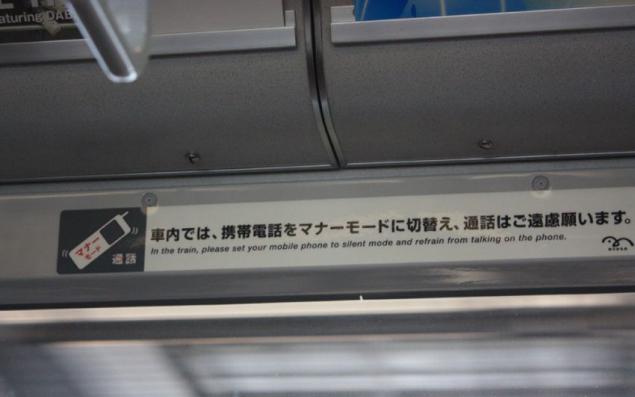
Arrive at your destination. Follow the signs, and only them.
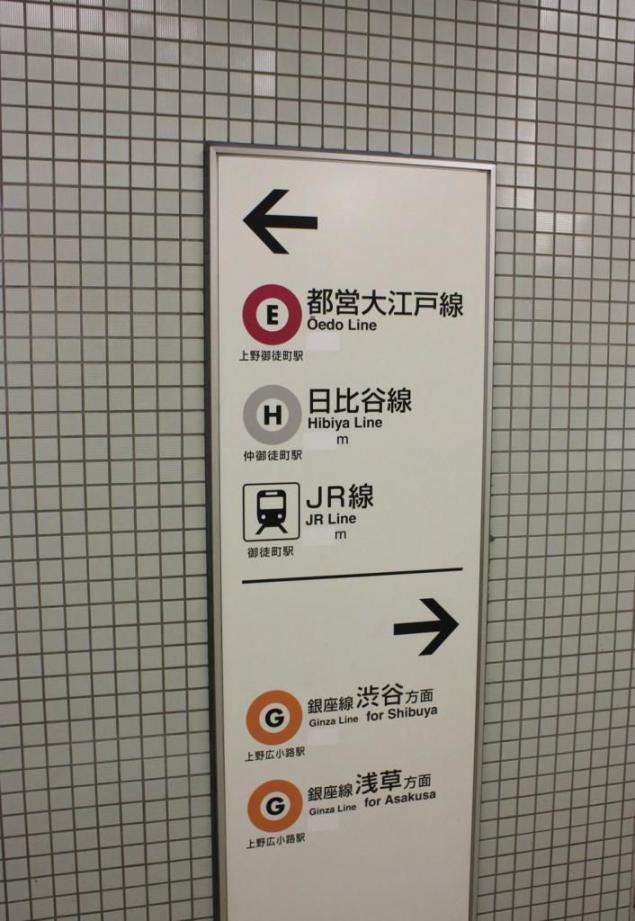
As I have said, many stations - Integrated Transport. Without leaving the building have access to all kinds of public transport in a given place (except taxis and buses, of course).
See index on JR Line - go according to the directions for Japanese train (note how many pointers hanging on)
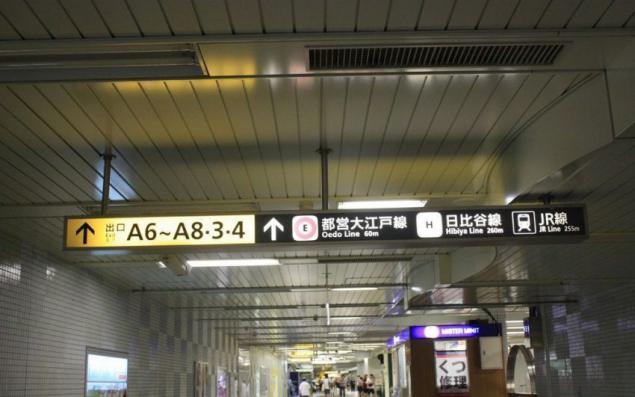
JR - Japan Rail. Something like our Railways, only the Japanese. Is responsible for almost all ground trains in Japan, other than private, of course.
Exit onto the platform - the escalator. The Japanese believe that it is necessary to protect the health, because all the escalators / elevators. And when it's 35 degrees in the shade, you begin to understand why they say that. All rooms in Japan, by the way, are conditioned (everything - train, subway, buses, cafes - all cool).

Japanese train. They are very similar to the subway train, because inside the gallery and descriptions not, as all in general standardized. Communicating system - exactly the same, even the same tickets.
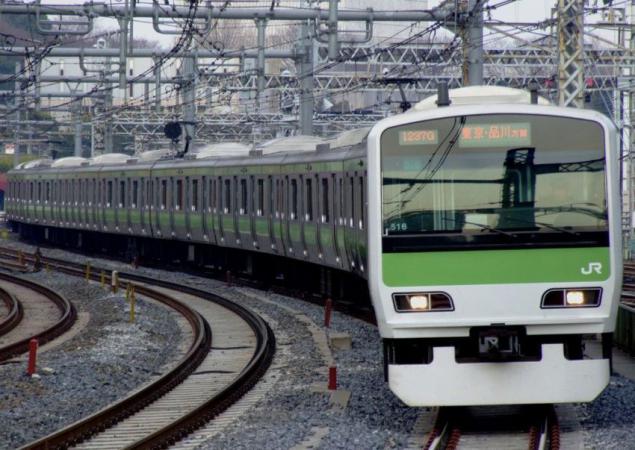
We turn to high-speed trains.
As I said, the stations in Japan are trying to make an integrated transport nodes. Because a number of major stations, you can immediately go on a Shinkansen. Shinkansen - a high-speed long-distance trains connecting the entire country. Repetition interval for each line - 10-20 minutes.

The only thing that is worth noting - a ticket for Shinkansen still worth buying in advance, if the trip is important and has a clear timetable.
The fare in these trains is quite high. For example, the way from Tokyo to Kyoto cost me 7000 yen (~ 2,300 rubles). The train was traveling about 2:30, made about 10 stops and walked 500 kilometers. So it's not difficult to calculate that the average speed based on acceleration and stops was 200 km / h. On the straight sections of the line, he accelerated to 400. To be honest - did not feel the speed.
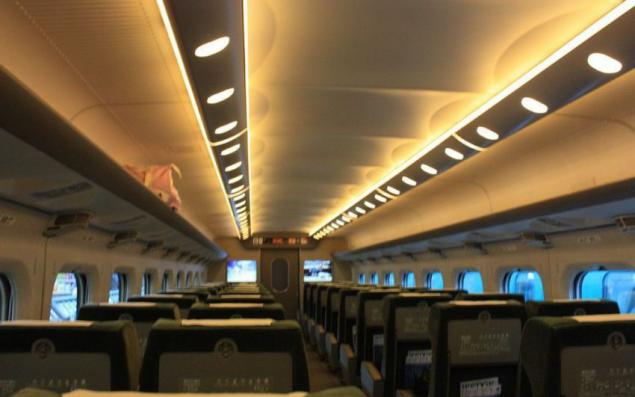
Picture taken in the Kyoto in the right frame of two Shinkansen, one (of us) went on to Osaka, which is very close, the other in Tokyo.
Many will say why high-speed trains when there is a plane. Explain - you need to register on the plane, take the luggage, waiting for planting. In the train - sat down and went. In fact, you can even buy tickets in advance is not, and go all over the country freely.
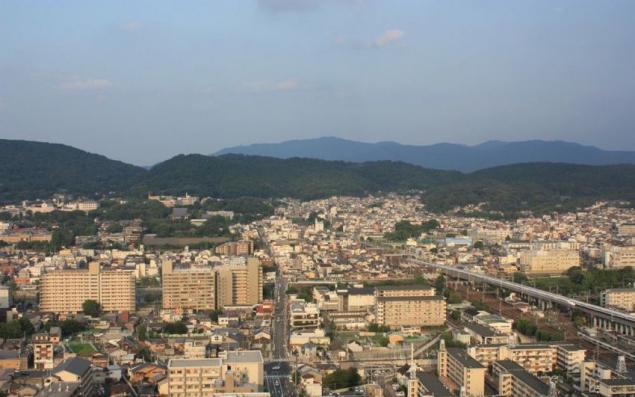
Once in Kyoto, understand that in this part of the city and metro trains do not. Step on the bus! Notice the icon "Disabled" next to the number of the bus.
However, the same thought, and all the other passengers Shinkansen, because the bus was going to turn. And "resolved" for 5-7 minutes. In the bus, no one climbed "forward Batko", do not push - all stood in line and waited in a civilized manner.
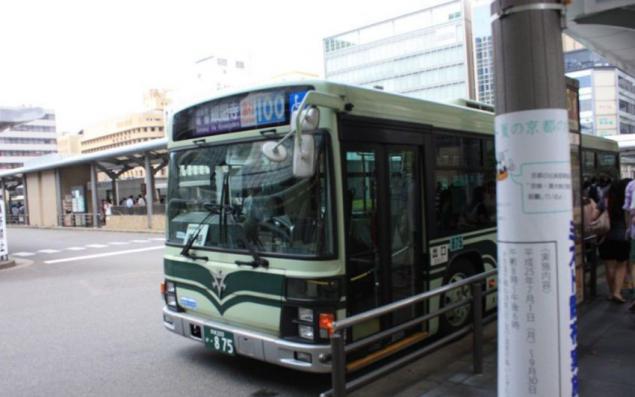
A little bit about Kyoto.
It's a nice, quiet and mostly two or three storey town. Here, compared to Tokyo, quiet and measured life. Low-rise it is related to the fact that previously Kyoto was Japan's capital and the emperor lived here and here was the imperial palace. However, over time it became Tokyo entertainment attract more and he moved there at all. The ban on the construction of tall buildings removed not long ago, but it is especially anyone here and do not need, and still the tallest building in the city is the Kyoto Tower (131 meters).
For the most part of Kyoto as the photo. Cool, is not it?
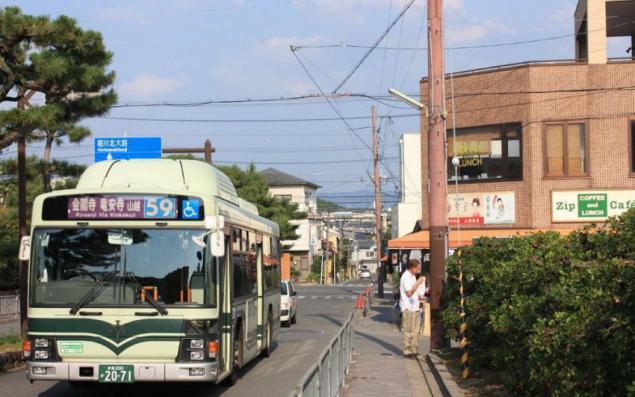
Let's go back to the transport. And disabled, as I said earlier.
Speaking in a nutshell, people with disabilities in Japan do not sit at home. All subway station, trains, buses, etc. - anywhere there is equipment for wheelchairs. Track for the blind in the same everywhere absolutely everywhere.
This pattern was observed at the bus stop. Pulled up the girl in a wheelchair, the driver saw as - cast wheel and ran to help call. She told him that was not her route and the bus left. Pulled up next, and the situation repeated itself. The driver did not immediately went to throw a girl in the bus - helped the passenger who came out of the cabin. Carriage fixed on a special platform in the bus - you can go.
Ps: The picture was taken from a distance, so as not to confuse God forbid Woman disabled. Just could not do it, I think it's important.
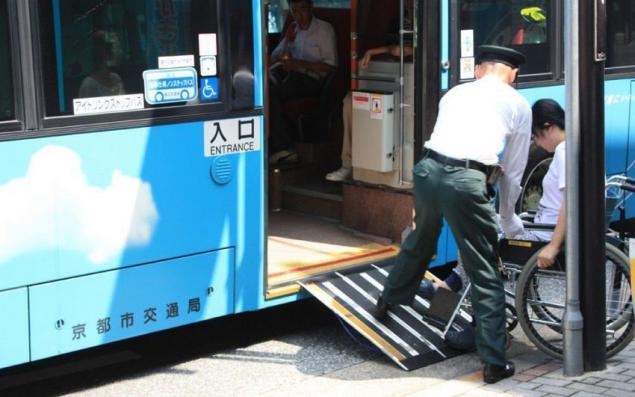
Buses are equipped with machine guns for payment. Alas, there was no time to take a picture, because people behind and have been waiting for, so tell.
Suesh trifle amount of travel, if necessary, the machine will change. If there are no trifles - automatic razmennnik large bills next. Exchanged, kunil payment machine was gone. Payment on exit. The doors opened and the rear, and the front - no one is afraid that the passenger escape without paying.
Smoothly move on to cars. In Japan, the left-hand traffic.
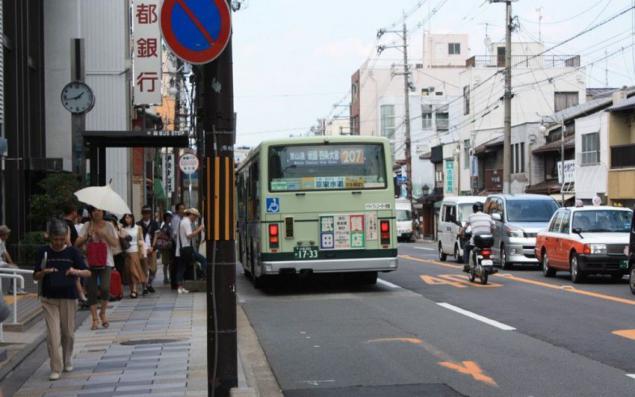
Speaking of cars, of course, the first thing that interests us - the quality of roads. It is just gorgeous. Sam did not go behind the wheel there, but a lot riding on Japan on buses (and not only in the capital and in Kyoto) - asphalt perfect. Not a single pit.
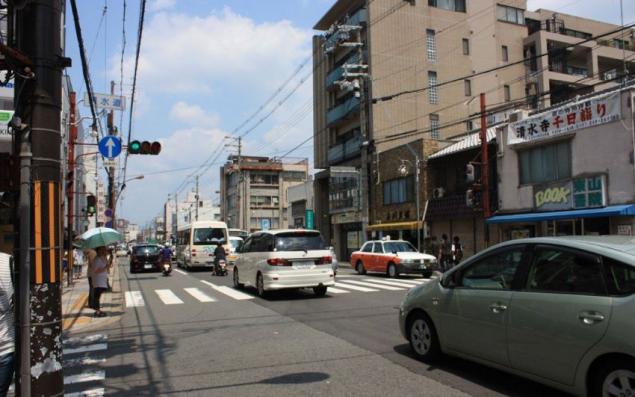
Like this look ordinary street in a residential area. This picture was taken on the way to the popular temple, however, no difference. As you can see - special mirrors, transitions, all clean and ... narrowly. But this historical site, expand just will not work.
James' I have not seen in Japan. Of course, mainly because there are few cars. Own car in the large cities, as I said earlier, is expensive. However, sometimes it also happens.
Again, this is a narrow street of the popular tourist destination of the temple - because some taxi, and because such a jam. The exception rather than the rule.

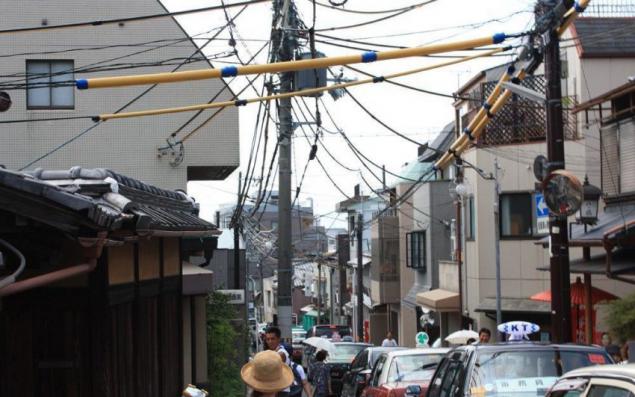
If we are talking about a taxi, say a few words about it.
They have a lot of taxis, they are all licensed and standardized. As the taxi very popular (almost all machines) are Toyota Crown. Who knows the model, he remembered that it is a heavy machine frame. In connection with all of the above taxis in Japan - the most expensive form of transport. Only one trip around the city not far from the center cost me 3,000 yen (1,000 rubles). But the service is first class, even open doors for yourself :)
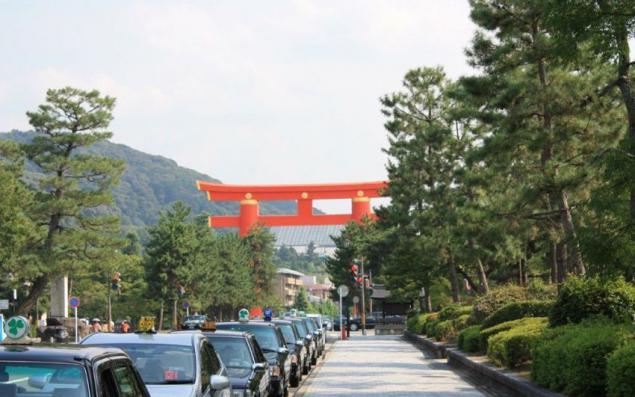
With regard to the same personal transport, mainly cost of ownership is high because of parking spaces and Japan's policy with regard to ecology.
Machines themselves in Japan is relatively cheap for their salaries. Most of the production Toyota does not cost more than 3 million. Yen (1 million. Rubles), the only exceptions are the well-known Land Cruiser (2 million. Yen), and Lexi - they are expensive already on order.
However, a man with a normal education in Tokyo can earn 250-300 thousand yen, 150-200 women, as the maximum income for a family with higher education, where they work and the husband and wife in Tokyo is about 500 thousand. yen. I think it is clear that accumulated on the machine itself is not the problem ...
However cm. Pictured below.
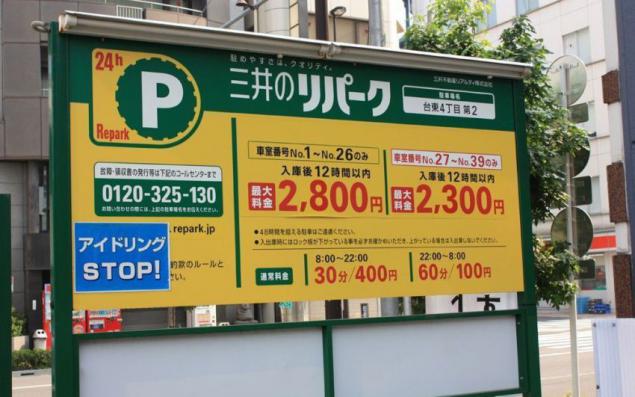
Meet the fully automated parking in Tokyo. This Ueno district, in principle, you can call it the center of Tokyo, although the "center" in Tokyo - a loose concept. To the center from here by train minutes 10.
So the cost. 2800 yen (933 rubles) per day, 400 yen for 30 minutes. I think no further need to explain why they are not very fond of owning a car. Almost 30 TR Only a month for parking. And a special alternative in terms of parking - no.
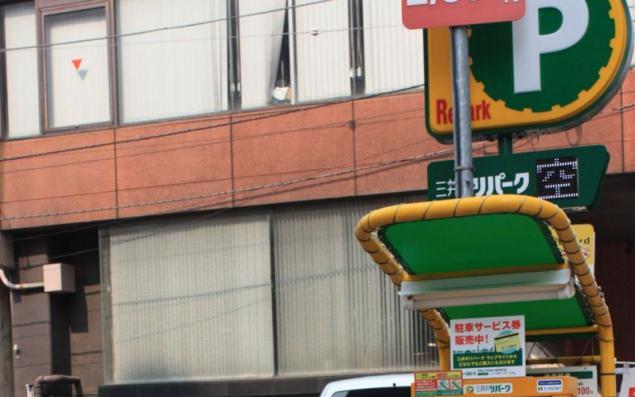
So looks the part.
No guard, only the camera. Steal cars in Japan - occupation useless.
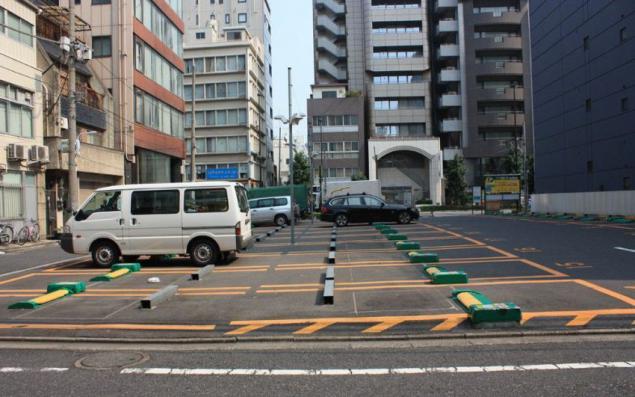
So popular means of transport in Japan - a bicycle.
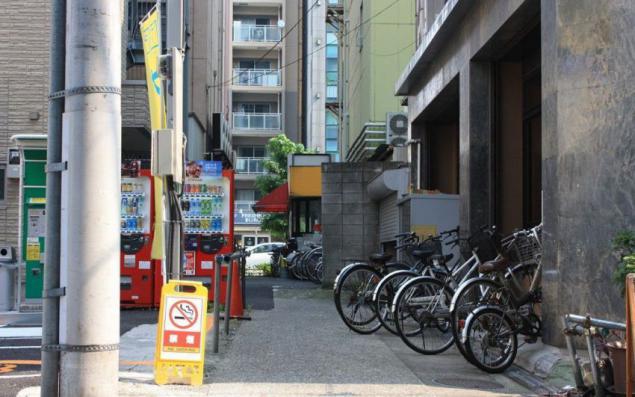
Note that no chains. Just turn the wheel lock. They stand to drunken tourists have not left. And if you want to steal great - take it and blow. True, they cost thousands on the streets at night in the open, do not steal!
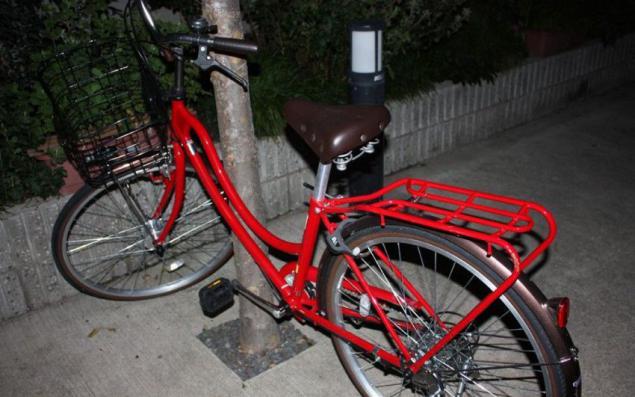
And for a snack. Monorail.
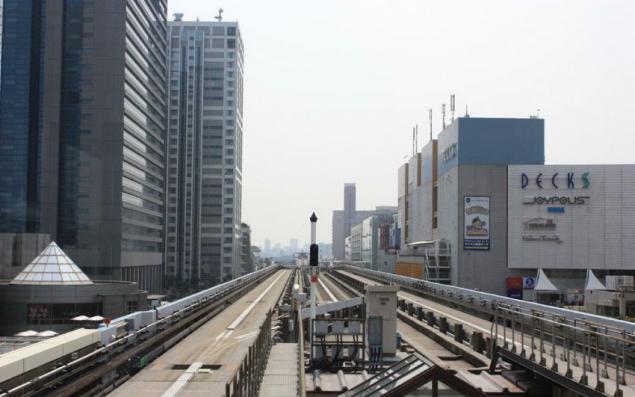
Monorail connects Tokyo and Odaiba (passes through Odaiba around and back - in the center of Tokyo). The train is fully automatic. There is not even the driver. Monorail Japanese consider the future.
Odaiba, by the way, an artificial island in Tokyo. When I heard - I think a small island poured. But in reality it turned out to be the size of a district in Tokyo. Very large.
It looks like the station. Access system and tickets - are the same as in the subway / train.
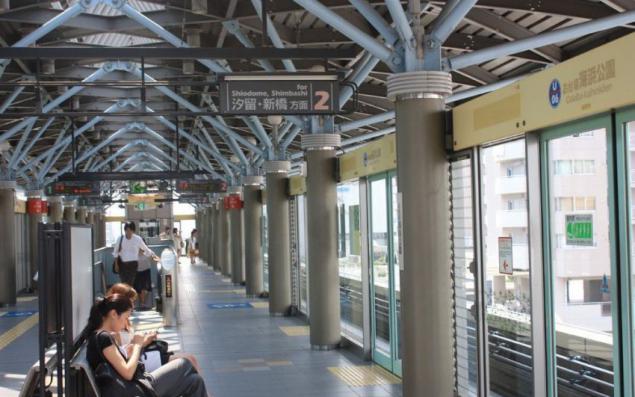
Train arrived. As you can see - there is no driver. Rather, if you look closely, it sits in front of someone very like him, but it is a simple Japanese. Usually in the first car tusyat children and tourists. You can look in the windshield.
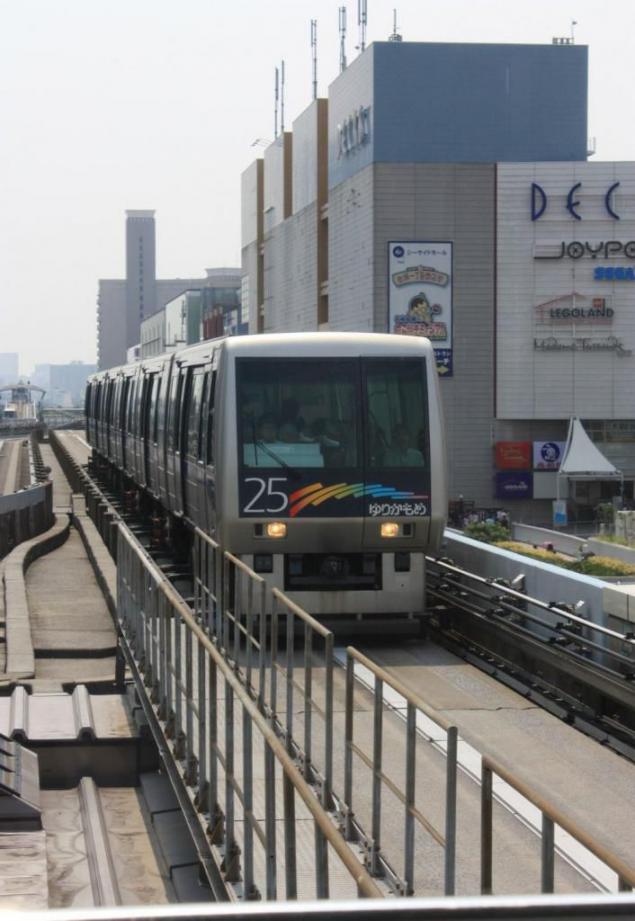
The doors open automatically, people in / out, and the train goes on. Wonders of automation on the face ... Trains run as well very often. Sequence number for this - the 25th.
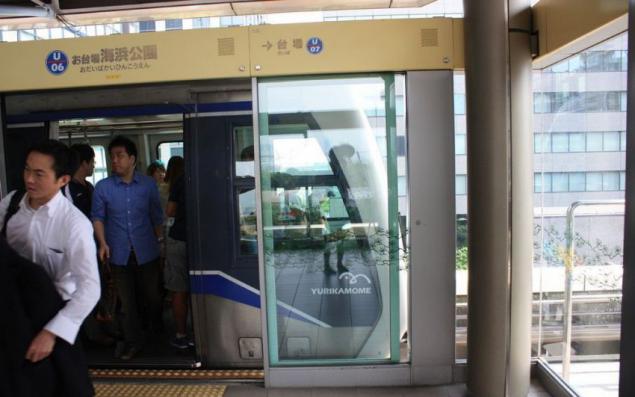
By the way inside the cars basically exactly the same as in the subway / trains too. Standardized, and very comfortable.
And finally, a bit of news.
A few days ago showed off its new JR Shinkansen - JR Tokai L0 Series Shinkansen. This maglev train, the so-called maglev. At present, the composition consists of 16 cars and can carry up to thousands of passengers. He has a top speed of 500 km / h!
Until 2027, the Japanese plan to build a road between Osaka and Tokyo, to replace the current Sinkansenu where I went.
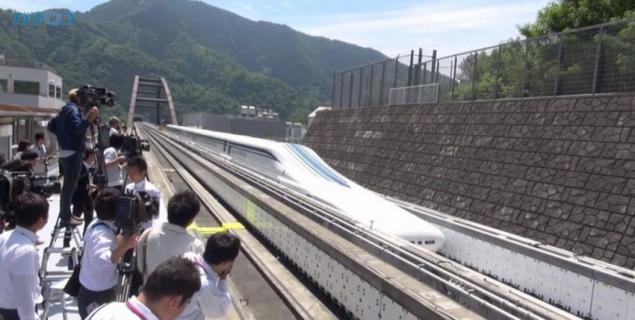
Tokyo - the only worthy candidate to host the Olympic Games in 2020. All over the city hung posters. Most likely, the Olympics in 2020 will be there. I think for many it will be a great occasion to visit Japan. Although I would personally did not wait that long and would have gone right now. Beautiful country!
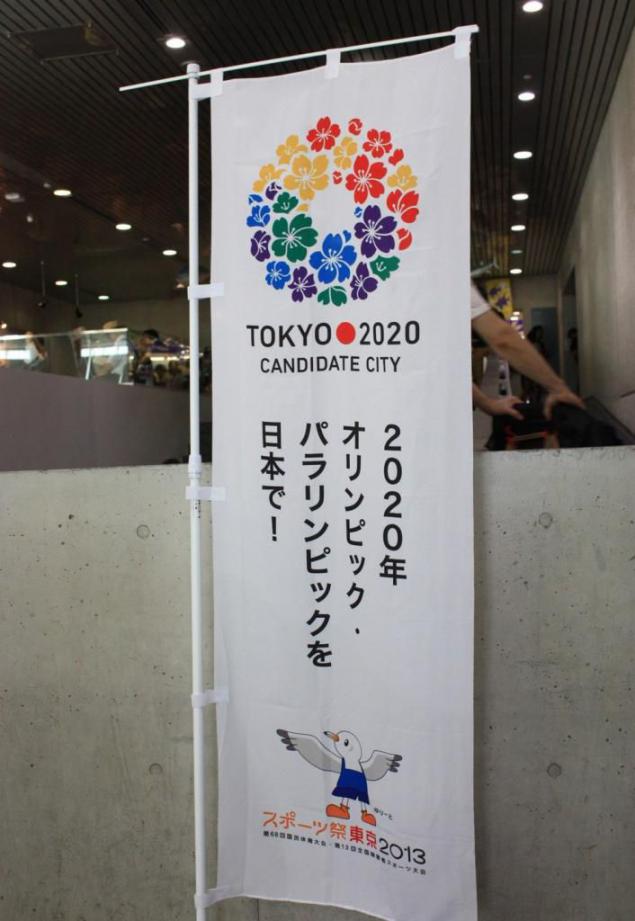
Source:

Let's start with the Tokyo subway.
In the photo the entrance to the station Suehirocho Tokyo subway. Would look like the entrance to any station other than the major hubs. Subway in Tokyo - not deep bookmarks, not subjectively deeper than 10-15 meters.

And here is the first difficulty faced by any tourist in Tokyo, and it is the same - the first manifestation of progress. The fact that all the most popular public transportation system in Japan - fully automated. There are no conductors and cashiers. Ticket purchase is made by myself in such a machine. You need to select the desired number on the screen, scatter coins and the machine prints the ticket.

The challenge is also to what kind of ticket price to choose.
In this case, we have a map over your head, you only need to find a destination. Only here on small stations such card has no station names in English, and the fun begins puzzle :)
Prices on the map - in yen. Divide by 3 to find out the approximate cost in rubles. On this line the minimum ticket price - 170 yen, ie ~ 56 rubles.

Purchased a ticket for 260 yen. Ticket paper,
To enter the platform is necessary to pass the turnstile by inserting the card into the reader (pictured it in light green box). When entering the ticket is marked as used, but without it from the destination station can not get out - have to buy a new one. Because the stations clean. When you exit the subway turnstile also eat the ticket and send it for recycling and reuse.
The Japanese tend to travel in a reusable contactless cards (blue card reader on the photo).

Turnstiles

Turnstiles passed. Top you see the signs where to go. On them we'll talk more later, now I will note only one thing - many stations are huge, and local do not know their entirety, because absolutely everyone uses these pointers.

The signs have come to the correct platform, found our train with burgundy red stripe. Such automatic stop, so that people do not fall onto the tracks, only on some lines.
Trains in Japan, as we all know, they go right on schedule. Every 2-3 minutes. 90% of time on trains is spacious and has a seating area. During rush hour a lot of people, but not to the eyeballs.

Absolutely all trains have this kind of board. However, this is not the peak of the Japanese progress, half of trains instead of the meager information board full line diagram, the current station, the following information, if possible data transfer to another, etc. All in English and Russian (and across the country)

In all public transport in Japan is forbidden to talk on cell phones.
If this rule is violated tourist - the Japanese will understand and mind will not submit. However, if it makes a local, he is bound to be reprimanded. In my memory for 2 weeks stay in this country once the Japanese talking on the phone, and he did it very quietly and covered her mouth to God forbid not to disturb others.

Arrive at your destination. Follow the signs, and only them.

As I have said, many stations - Integrated Transport. Without leaving the building have access to all kinds of public transport in a given place (except taxis and buses, of course).
See index on JR Line - go according to the directions for Japanese train (note how many pointers hanging on)

JR - Japan Rail. Something like our Railways, only the Japanese. Is responsible for almost all ground trains in Japan, other than private, of course.
Exit onto the platform - the escalator. The Japanese believe that it is necessary to protect the health, because all the escalators / elevators. And when it's 35 degrees in the shade, you begin to understand why they say that. All rooms in Japan, by the way, are conditioned (everything - train, subway, buses, cafes - all cool).

Japanese train. They are very similar to the subway train, because inside the gallery and descriptions not, as all in general standardized. Communicating system - exactly the same, even the same tickets.

We turn to high-speed trains.
As I said, the stations in Japan are trying to make an integrated transport nodes. Because a number of major stations, you can immediately go on a Shinkansen. Shinkansen - a high-speed long-distance trains connecting the entire country. Repetition interval for each line - 10-20 minutes.

The only thing that is worth noting - a ticket for Shinkansen still worth buying in advance, if the trip is important and has a clear timetable.
The fare in these trains is quite high. For example, the way from Tokyo to Kyoto cost me 7000 yen (~ 2,300 rubles). The train was traveling about 2:30, made about 10 stops and walked 500 kilometers. So it's not difficult to calculate that the average speed based on acceleration and stops was 200 km / h. On the straight sections of the line, he accelerated to 400. To be honest - did not feel the speed.

Picture taken in the Kyoto in the right frame of two Shinkansen, one (of us) went on to Osaka, which is very close, the other in Tokyo.
Many will say why high-speed trains when there is a plane. Explain - you need to register on the plane, take the luggage, waiting for planting. In the train - sat down and went. In fact, you can even buy tickets in advance is not, and go all over the country freely.

Once in Kyoto, understand that in this part of the city and metro trains do not. Step on the bus! Notice the icon "Disabled" next to the number of the bus.
However, the same thought, and all the other passengers Shinkansen, because the bus was going to turn. And "resolved" for 5-7 minutes. In the bus, no one climbed "forward Batko", do not push - all stood in line and waited in a civilized manner.

A little bit about Kyoto.
It's a nice, quiet and mostly two or three storey town. Here, compared to Tokyo, quiet and measured life. Low-rise it is related to the fact that previously Kyoto was Japan's capital and the emperor lived here and here was the imperial palace. However, over time it became Tokyo entertainment attract more and he moved there at all. The ban on the construction of tall buildings removed not long ago, but it is especially anyone here and do not need, and still the tallest building in the city is the Kyoto Tower (131 meters).
For the most part of Kyoto as the photo. Cool, is not it?

Let's go back to the transport. And disabled, as I said earlier.
Speaking in a nutshell, people with disabilities in Japan do not sit at home. All subway station, trains, buses, etc. - anywhere there is equipment for wheelchairs. Track for the blind in the same everywhere absolutely everywhere.
This pattern was observed at the bus stop. Pulled up the girl in a wheelchair, the driver saw as - cast wheel and ran to help call. She told him that was not her route and the bus left. Pulled up next, and the situation repeated itself. The driver did not immediately went to throw a girl in the bus - helped the passenger who came out of the cabin. Carriage fixed on a special platform in the bus - you can go.
Ps: The picture was taken from a distance, so as not to confuse God forbid Woman disabled. Just could not do it, I think it's important.

Buses are equipped with machine guns for payment. Alas, there was no time to take a picture, because people behind and have been waiting for, so tell.
Suesh trifle amount of travel, if necessary, the machine will change. If there are no trifles - automatic razmennnik large bills next. Exchanged, kunil payment machine was gone. Payment on exit. The doors opened and the rear, and the front - no one is afraid that the passenger escape without paying.
Smoothly move on to cars. In Japan, the left-hand traffic.

Speaking of cars, of course, the first thing that interests us - the quality of roads. It is just gorgeous. Sam did not go behind the wheel there, but a lot riding on Japan on buses (and not only in the capital and in Kyoto) - asphalt perfect. Not a single pit.

Like this look ordinary street in a residential area. This picture was taken on the way to the popular temple, however, no difference. As you can see - special mirrors, transitions, all clean and ... narrowly. But this historical site, expand just will not work.
James' I have not seen in Japan. Of course, mainly because there are few cars. Own car in the large cities, as I said earlier, is expensive. However, sometimes it also happens.
Again, this is a narrow street of the popular tourist destination of the temple - because some taxi, and because such a jam. The exception rather than the rule.


If we are talking about a taxi, say a few words about it.
They have a lot of taxis, they are all licensed and standardized. As the taxi very popular (almost all machines) are Toyota Crown. Who knows the model, he remembered that it is a heavy machine frame. In connection with all of the above taxis in Japan - the most expensive form of transport. Only one trip around the city not far from the center cost me 3,000 yen (1,000 rubles). But the service is first class, even open doors for yourself :)

With regard to the same personal transport, mainly cost of ownership is high because of parking spaces and Japan's policy with regard to ecology.
Machines themselves in Japan is relatively cheap for their salaries. Most of the production Toyota does not cost more than 3 million. Yen (1 million. Rubles), the only exceptions are the well-known Land Cruiser (2 million. Yen), and Lexi - they are expensive already on order.
However, a man with a normal education in Tokyo can earn 250-300 thousand yen, 150-200 women, as the maximum income for a family with higher education, where they work and the husband and wife in Tokyo is about 500 thousand. yen. I think it is clear that accumulated on the machine itself is not the problem ...
However cm. Pictured below.

Meet the fully automated parking in Tokyo. This Ueno district, in principle, you can call it the center of Tokyo, although the "center" in Tokyo - a loose concept. To the center from here by train minutes 10.
So the cost. 2800 yen (933 rubles) per day, 400 yen for 30 minutes. I think no further need to explain why they are not very fond of owning a car. Almost 30 TR Only a month for parking. And a special alternative in terms of parking - no.

So looks the part.
No guard, only the camera. Steal cars in Japan - occupation useless.

So popular means of transport in Japan - a bicycle.

Note that no chains. Just turn the wheel lock. They stand to drunken tourists have not left. And if you want to steal great - take it and blow. True, they cost thousands on the streets at night in the open, do not steal!

And for a snack. Monorail.

Monorail connects Tokyo and Odaiba (passes through Odaiba around and back - in the center of Tokyo). The train is fully automatic. There is not even the driver. Monorail Japanese consider the future.
Odaiba, by the way, an artificial island in Tokyo. When I heard - I think a small island poured. But in reality it turned out to be the size of a district in Tokyo. Very large.
It looks like the station. Access system and tickets - are the same as in the subway / train.

Train arrived. As you can see - there is no driver. Rather, if you look closely, it sits in front of someone very like him, but it is a simple Japanese. Usually in the first car tusyat children and tourists. You can look in the windshield.

The doors open automatically, people in / out, and the train goes on. Wonders of automation on the face ... Trains run as well very often. Sequence number for this - the 25th.

By the way inside the cars basically exactly the same as in the subway / trains too. Standardized, and very comfortable.
And finally, a bit of news.
A few days ago showed off its new JR Shinkansen - JR Tokai L0 Series Shinkansen. This maglev train, the so-called maglev. At present, the composition consists of 16 cars and can carry up to thousands of passengers. He has a top speed of 500 km / h!
Until 2027, the Japanese plan to build a road between Osaka and Tokyo, to replace the current Sinkansenu where I went.

Tokyo - the only worthy candidate to host the Olympic Games in 2020. All over the city hung posters. Most likely, the Olympics in 2020 will be there. I think for many it will be a great occasion to visit Japan. Although I would personally did not wait that long and would have gone right now. Beautiful country!

Source:

